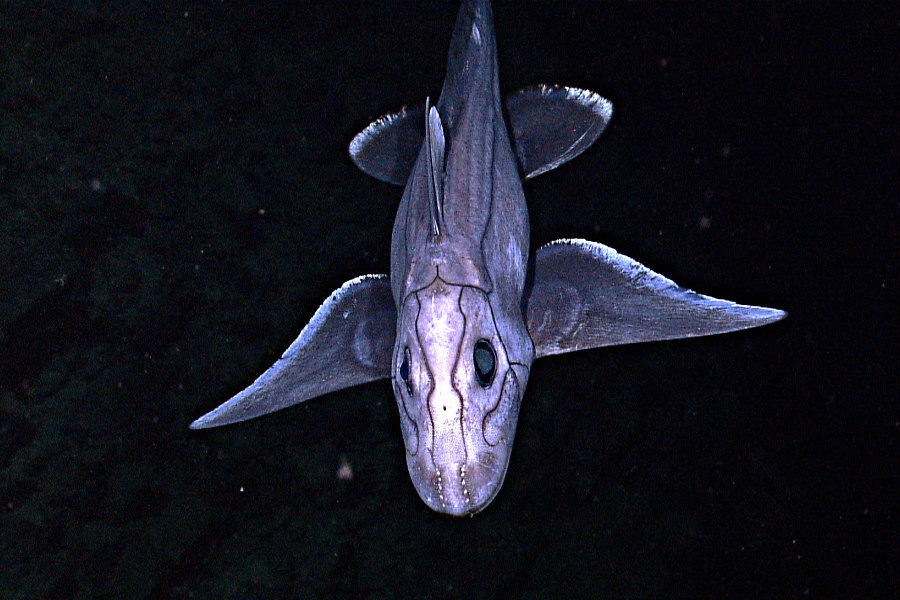Mysterious and rare ghost shark caught on video
Loading...
In a rare serendipitous sighting, scientists captured videos of an eerie bluish grey shark swimming in Northern Hemisphere waters.
The "ghost shark" captured on film is actually not a shark, but a chimaera – a relative that split off evolutionarily from its toothy cousins about 300 million years ago. These deep-water creatures are only known to live near New Zealand and Australia, although marine biologists say that this video footage could indicate a greater range than they previously realized.
“Normally, people probably wouldn’t have been looking around in this area, so it’s a little bit of dumb luck,” program director for the Pacific Shark Research Center at Moss Landing Marine Laboratories Dave Ebert, according to the National Geographic.
Researchers didn’t set out to find Hydrolagus trolli, or the pointy-nosed blue chimaera, when they sent a remote operated vehicle to explore the deep waters off of California and Hawaii in 2009. Instead, the scientists involved in the project were geologists - but they hit a marine biology motherlode anyway.
The chimaera is also known as the rabbitfish, ratfish, or ghost shark, and prefers the colder waters of the deep ocean. Physically, these ghost sharks are somewhat of a throwback to their marine dinosaur ancestors, with eerie lines tracing its head and body.
The footage from those dives was finally released this week by the Monteray Bay Aquarium Research Institute, and if the creature featured in the videos is confirmed to be a pointy-nosed blue chimaera, it will be the first time scientists have spotted one in the Northern Hemisphere.
“The only way we can collect these species is by trawling,” Millersville University chimaera expert Dominique Didier told National Geographic. “So, it's like a snapshot. Imagine trying to understand species distribution in Lake Michigan and you sample the lake using a Dixie cup. Trawling the ocean is like that.”
“I suspect many species are wide-ranging– we just don't have the data.”
Researchers published a study on the pointy-nosed blue chimaera in the journal Marine Biodiversity Records this week.
It has been a good year for shark researchers, with north Atlantic shark researchers making the first-ever discovery of a great white shark nursery in the waters off the coast of New York, as The Christian Science Monitor reported:
“This is a really unique population of animals,” said Haley Newton, a veterinary pathologist with the Wildlife Conservation Society who has been involved with the research. “It’s a life stage that really hasn’t been studied very much.”
Ocearch tracks sharks by putting GPS tags on their dorsal fins, so each time a shark’s dorsal fin comes above the water, the location is pinned to the Ocearch database. The group’s researchers say attaching the tags is painless for the sharks and only lasts 15 minutes from start to finish. And tagging a few individuals helps researchers protect the entire shark population, adds Fischer.
In January, marine biologists also discovered a sand shark nursery in New York waters, close to Long Island.








